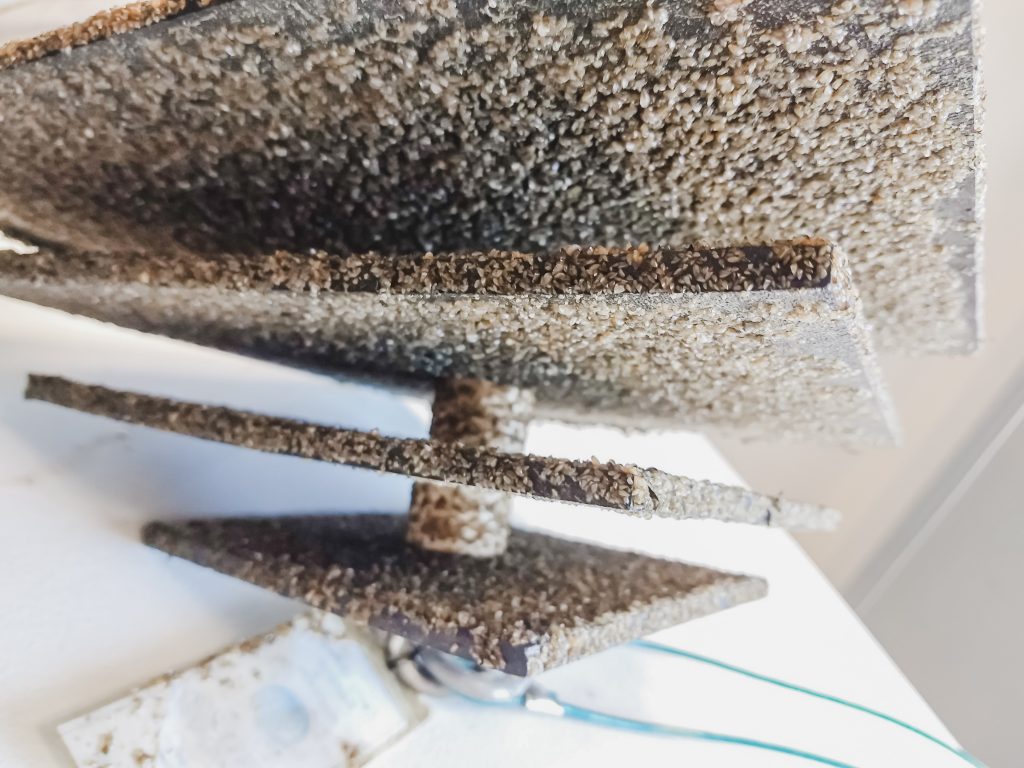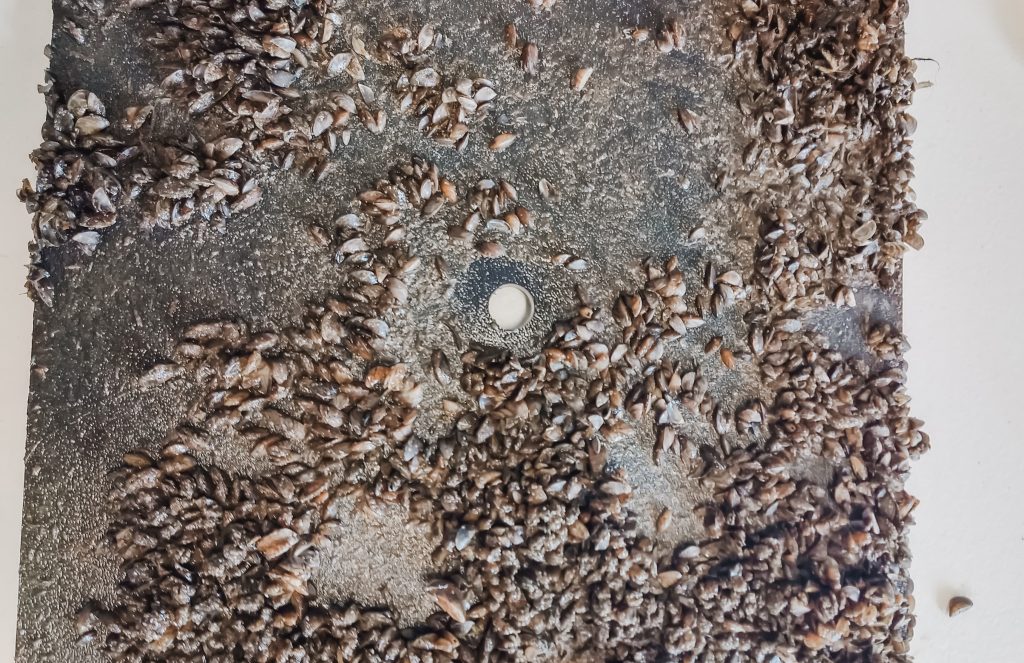Zebra mussels: What they are, what they eat, and how they spread
By Jed Harvey and Abby Phinney, Lilly Center Staff | Part 1 | Part 2 | Part 3 | Part 4
Every creature is fascinating in its own way, including zebra mussels. Each organism has something that makes it unique. Be it the glass houses of the diatoms, the air-permeable skin of frogs, or the intense complexity of the human eye, every living thing has intrinsic interest and intrigue.
Sometimes, though, that interest is overshadowed by frustration at the species or creature. That is one of a couple issues with the invasive zebra mussels. They are annoying, they are not pleasant to have around, and they do not look immediately interesting. But they, just like every other clade, kingdom or culture, are special in their own important ways. Let’s explore that a bit.
What is a zebra mussel?
Zebra mussels, or more specifically Dreissena polymorpha, are a species of freshwater bivalve. They are native to the Black Sea and Caspian Sea in eastern Europe, and have two half-shells that they protect themselves with, just like their clam, oyster and scallop cousins. “Cousins” is a stretch, because the main difference between clams and mussels are the shape of the shell; in fact, based on genetics, zebra mussels (and quagga mussels, which are sibling species) are more closely related to several types of saltwater clams than they are any other mussel. Mussels have a distinctly triangular shape instead of the rounded clam shape.
What do they eat?
Just like many other bivalves, zebra mussels are filter feeders. They eat by sucking in water, filtering out all the particles, and spitting out what they do not want (along with the water). For us, it would be like turning a piece of cake into crumbs and “breathing” them in instead of just taking a bite. After zebra mussels filter out all the particles from the water, they pick out their favorite bits like fish feces, bits of decaying organic matter and microscopic organisms. What they pick out, they digest as food, and spit out the rest — including cyanobacteria (blue-green algae).
That is one of the interesting things about zebra mussels. They can sort through what they want to eat and spit out all the rest in a mucous-covered mess, and they do not even have hands! We generally have enough trouble sorting through socks on laundry day; imagine if we had to do that blindfolded, with our mouths?

What eats zebra mussels?
Where they are from, zebra mussels have a whole host of natural predators. Birds, fish and many other creatures consume these small crunchy-coated nuggets. Here in northern Indiana, however, the list of organisms that can control the zebra mussel population is much, much more limited. Of all the species that live here, only a few fish have ever been seen to eat zebra mussels (specifically smallmouth bass, yellow perch and red-ear sunfish), and even then they do not eat enough to make much of a difference. Likely, the biggest predator here in the Midwest is the crayfish, which can eat dozens of small mussels.
On a related note, one species that definitely can but really should not eat zebra mussels is us, Homo sapiens. Eating zebra mussels is a health risk due to the fact that they are filter feeders. As they filter the water, pollutants like heavy metals or pesticides can get stuck and accumulate inside their shells. Do not try to cook them for dinner!
How do they spread?
There are two answers to this question: the biological answer and the overarching answer. Let’s start with the science and then answer the more pertinent question.
Zebra mussels are hardcore organisms. They live fast, die often, and have hundreds of thousands of babies at a time. Zebra mussel larvae quickly grow little hair-like fins as they enter their next stage of life, free-swimming veligers. Within weeks the tiny veligers find a suitable surface to attach to, where they stick themselves and begin to grow into what we think of as a zebra mussel.
What surfaces do they like? Just about anything. Steel, wood, plastic and rocks are all places they are found frequently in Kosciusko County. Scientists have tested many things and zebra mussels stick to nearly all of them, even asbestos. Zebra mussels do not just collect a few a time; they prefer to colonize, and will quickly clog pipes and amass on the propellers and hulls of boats. Discarded shells that wash up onto beaches are also dangerously sharp underfoot.
This leads us to the real question, though. How do these bite-sized bivalves spread between lakes and bodies of water? The most common means of transportation are boats. They spread by sticking to boat hulls and other, related items commonly moved from lake to lake. We inadvertently give them a ride to new homes. This is why it is so important to carefully clean and dry your boat before transporting it!
How did zebra mussels get to the United States?
A veliger cannot swim across the ocean, and a mussel cannot be carried that far in a waterway’s current. Zebra mussels are the original stowaway: They caught a ride on a cargo ship! Zebra mussel veligers were likely sucked up by ships in the Caspian or Black Seas as the boats filled up their ballast tanks with the sea’s water. That water was not released until the ship got to the St. Lawrence Seaway, where the veligers were dumped into their new homes.

Zebra mussels in Kosciusko County lakes
Zebra mussels are interesting little organisms with interesting (albeit brief) lives and habits. Although common in Kosciusko County lakes, zebra mussels are not found in all of them! In May-August 2019, the Lilly Center research team installed PVC multi-tiered samplers (you can see what they looked like in the pictures above) onto piers across 14 major lakes in Kosciusko County, 12 of which have been infested with zebra mussels for multiple years and two of which have yet to be invaded.
Key takeaways from our study:
- Spawning is triggered by warm water, a fact evidenced by high colonization numbers in July.
- The story of these mussels in our lakes is complex. The amount of summer spawning and colonization varies between our lakes and across them from area to area. Right now, zebra mussels seem to be a lot more prevalent in some lakes than others.
- Careful recreation is still super important! Two of our major lakes – and maybe more of our smaller ones – are still uninfested!
Want to keep reading? Visit some of these helpful resources: